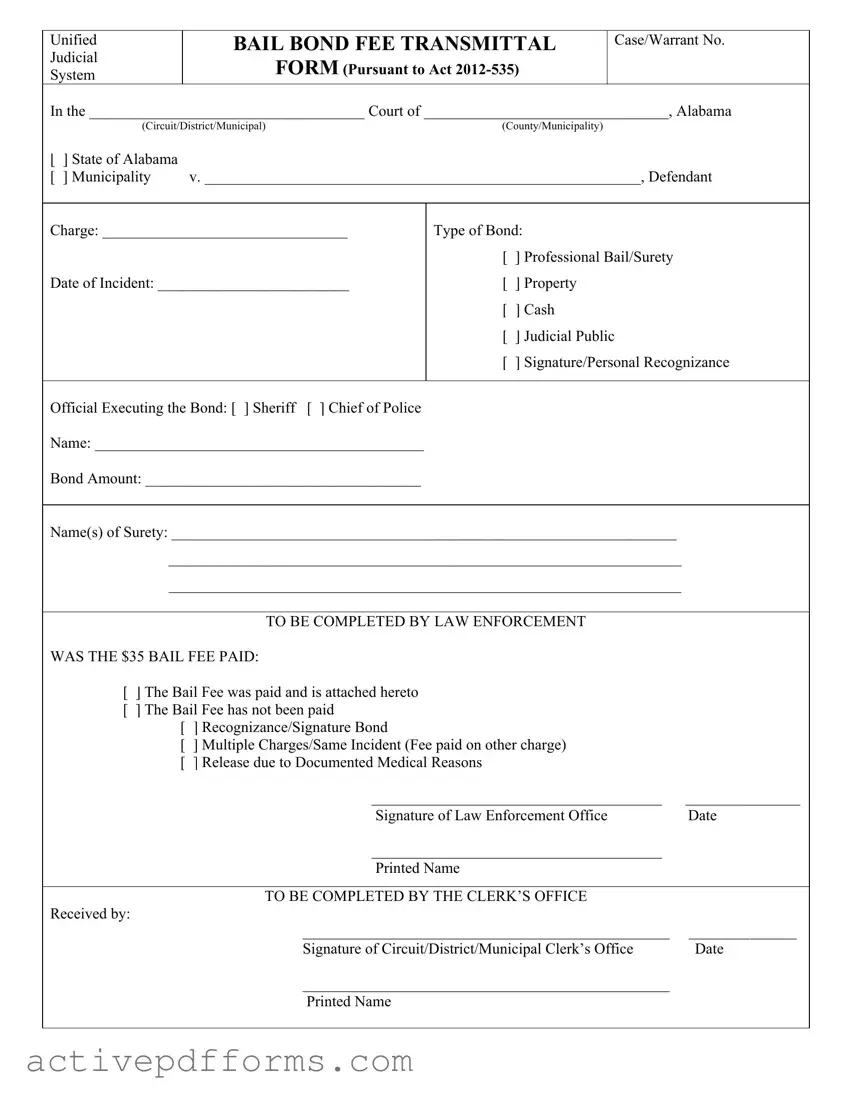In the state of Alabama, navigating the legal system, especially regarding bail bonds, can be complex and often daunting for many individuals. The Bond Release Alabama form, is a critical document within this process, playing a key role in the financial and procedural aspects of securing release from custody. This form, formally known as the Unified Judicial System Bail Bond Fee Transmittal Form Pursuant to Act 2012-535, is required in cases where a bond is posted. It encompasses various types of bonds including professional bail/surety, property, cash, judicial public, and signature/personal recognizance. Detailed within the form are essential components such as case or warrant number, court information, defendant identification, charge details, date of the incident, and the bond amount alongside the surety names. Additionally, it addresses the processing of a mandatory $35 bail fee by law enforcement, dictating whether it has been paid or not, and includes sections for both law enforcement and the clerk’s office to complete. The functionality of this form in the judicial system underscores its importance in ensuring the rights and responsibilities of all parties involved are clearly documented and communicated effectively, facilitating a smoother transition through the legal proceedings related to posting bail.

